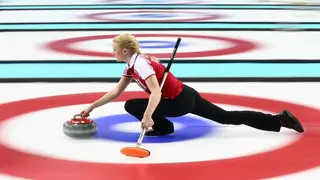Strangest sports: Top 10 weirdest sports in the world currently
Other Sports
When venturing into the world of water sports, the decision between kayaking and canoeing becomes a tricky choice, each offering a distinctive blend of adventure and connection with the water. Both kayaking and canoeing involve navigating narrow watercraft using paddles, yet the nuances lie in the equipment, techniques, and overall experience. This article will provide information to settle the kayaking vs canoeing debate.

Kayaking, with its closed-decked hulls and the rhythmic sweep of double-bladed paddles, invites intrepid travellers to take on a solitary task while wrapped in a sleek watercraft. Canoeing, on the other hand, encourages participants to travel together while sitting in an open canoe and using a single-bladed paddle to create a communal and, frequently, family bond with the water.
What is the difference between a kayak and a canoe? Both activities include propulsion by paddling a small boat, but important distinctions exist between them. To choose the ideal water sport for your interests and abilities, you must know the differences between the two.
Strangest sports: Top 10 weirdest sports in the world currently
Other Sports
Kayaks are small, tandem, or solo boats without an open roof. They have lower sides than canoes, so they sit lower in the water.
However, canoes are open-topped vessels that can carry more passengers and supplies. Recreational kayaking, fishing, and camping vacations are common uses for them.
Kayakers use a double-bladed paddle, while canoeists use a single-bladed paddle.
Canoeists often kneel or sit on a raised seat with their feet flat on the bottom of the boat, whereas kayakers sit in a low posture with their legs spread out in front of them. Because of the varying seating arrangements, not all paddles are suitable for usage.
Which is better, a kayak or a canoe? Embarking on the water for the first time as a beginner presents a thrilling choice between kayaking and canoeing. These two water sports share a foundation in paddling but diverge in critical aspects. Here are the fundamental differences between kayaking and canoeing that might help one to choose as per the preferences.
Taekwondo vs Karate: What are the main differences and similarities?
MMA

Kayaks are lightweight, narrow watercraft that may carry one or two people. Lightweight materials like fibreglass, plastic, or Kevlar are often used to make them. They are built for speed and manoeuvrability, perfect for whitewater and other rapids.
The paddler benefits from being kept dry and warm by the design, as well as increased steadiness. The twin blades of a kayak paddle provide the paddler with more leverage and precision during paddling.
Canoes are larger and more spacious than kayaks, and they may accommodate two or more passengers. Common construction materials include wood, aluminium, and fibreglass.
Unlike kayaks, which are driven by two paddle blades, canoes are propelled by a single blade. Kayaks, on the other hand, are more agile, swift, and manoeuvrable, while canoes are broader, more sturdy, and undeniably more capacious.
Hardest skateboard trick: Which are the 10 hardest skateboard tricks to land?
Other Sports

To move a kayak, paddlers need a device with two blades. The kayaker's legs are spread out in front of them as they sit on the kayak's bottom. When paddling, the kayaker's hands should be about shoulder-width apart on the paddle.
To keep moving ahead, the paddler should pull the paddle out of the water and do the same thing on the opposite side. Keep the paddle close to the kayak while paddling to get the most out of your efforts.
When canoeing, you push off using a paddle with only one blade. The paddler gets down on one knee inside the canoe, with one foot flat on the floor.
The paddler should work toward keeping their strokes uniform and smooth to keep their pace constant. Instead of depending exclusively on the arms to create power, an effective paddling technique in canoeing uses the vast muscles in the torso.
How many sports are there in the world? A list of all sports and games
Other Sports
Good paddling skills are essential for success in both kayaking and canoeing. Paddleboarders may avoid injuries and keep their pace constant by drawing force from their core muscles.

Kayaks are built for quickness, agility, and skill. Rapids, shallow streams, and confined waterways are no match for them.
The vast water, lakes, and tranquil rivers are all ideal for kayaking. Their quickness and agility make them suitable for racing and other forms of competitive play. There is a wide variety of kayaks, each serving a unique function.
Canoes prioritize stability, comfort, and portability in their construction. They are handy for extended journeys because of the quantity of stuff they can carry.
Canoes are also great for relaxing pursuits like fishing and birdwatching. There is a wide variety of canoes, each serving a unique function.
What are the rules of curling? Understanding curling as a sport
Other Sports

While kayaking and canoeing may be thrilling experiences, they can pose serious risks if not approached with prudence. Both sports share the inherent dangers of being on the sea.
Always put your safety first while kayaking. In the case of an accident, kayakers should always have a personal flotation device (PFD) on them.
Having the right gear, like a wetsuit or drysuit for cold water, is essential. As an added precaution, kayakers should constantly be aware of their location and the water around them.
Whitewater kayaking, which includes negotiating rapids and other fast-moving water, comes with concerns that paddlers should be aware of. Kayaking is a potentially hazardous sport, and only those with the requisite training and expertise should try it. Having an evacuation strategy ready is crucial as well.
Canoeing, like kayaking, has its own unique set of safety requirements. Canoeists should always dress appropriately and use a personal flotation device (PFD) that fits correctly. They should be aware of their whereabouts and alert to any threats they may encounter while swimming.
Ranked! Top 10 best indoor basketballs to hoop with right now
NBA
Capsizing is a potential hazard while paddling a canoe. If a canoe capsizes, the ability to rescue oneself or others from the water is crucial. Canoeists should also be cautious of the dangers of hypothermia, which may result from being submerged in cold water for an extended period.
Therefore, is a canoe better than a kayak? If you follow all the rules, kayaking and canoeing are fun and safe pastimes. The key to being safe is knowing what may go wrong and then figuring out how to prevent it. Kayakers and canoeists may enjoy their sports with a reduced chance of harm by adhering to standard safety procedures.

Canoes and kayaks, two of the oldest forms of watercraft, are tiny, lightweight boats propelled and steered by a paddle. Because of its pointy ends and curved sides, canoes can travel swiftly in deep and shallow water. Kayaks are often used for enjoyment on smaller bodies of water.
Which are the best socks for tennis and why are they the best?
Tennis
For fishing, nothing beats the versatility, ease of transportability, and durability of a kayak. One or more paddlers kneel or sit facing forward using a single-bladed paddle to propel the canoe. Canoes are lightweight and narrow watercraft with pointy ends and an open top.
Boats, in this context, refer to small water vehicles propelled by wind, mechanical, or human force and often exposed to the weather.
Canoeing, defined by its open design and the potential for many paddlers utilizing a single-bladed paddle, creates a feeling of communal discovery. In contrast, kayaking is a streamlined, single activity that entails paddling a closed-deck boat with two paddle blades. However, rowing adds a new dimension as participants drive themselves with oars to move the ship forward.
Both water sports share the fundamental joy of human-powered navigation on open waters. The decision arrived at from the kayaking vs. canoeing debate ultimately hinges on personal preferences and the desired nature of the aquatic adventure. Whether enticed by the sleek, solo kayaking experience or the communal and versatile aspects of canoeing, both activities offer an immersive and gratifying connection with nature.
A list of the best looking soccer cleats ever made: which is your favourite?
Football
READ ALSO: Jimmy Connors' net worth: Career earnings, salary, contracts, endorsements
Sports Brief gave extensive information about Jimmy Connors' net worth. Jimmy Connors' net worth has always been as remarkable as his tennis career. From thrilling matches on the court to shrewd financial moves off it, Connors has crafted an empire worthy of his legendary status.
The famous retired tennis player's net worth is $30 million currently. He formerly held the world no. 1 ranking. Check out the above article for more!